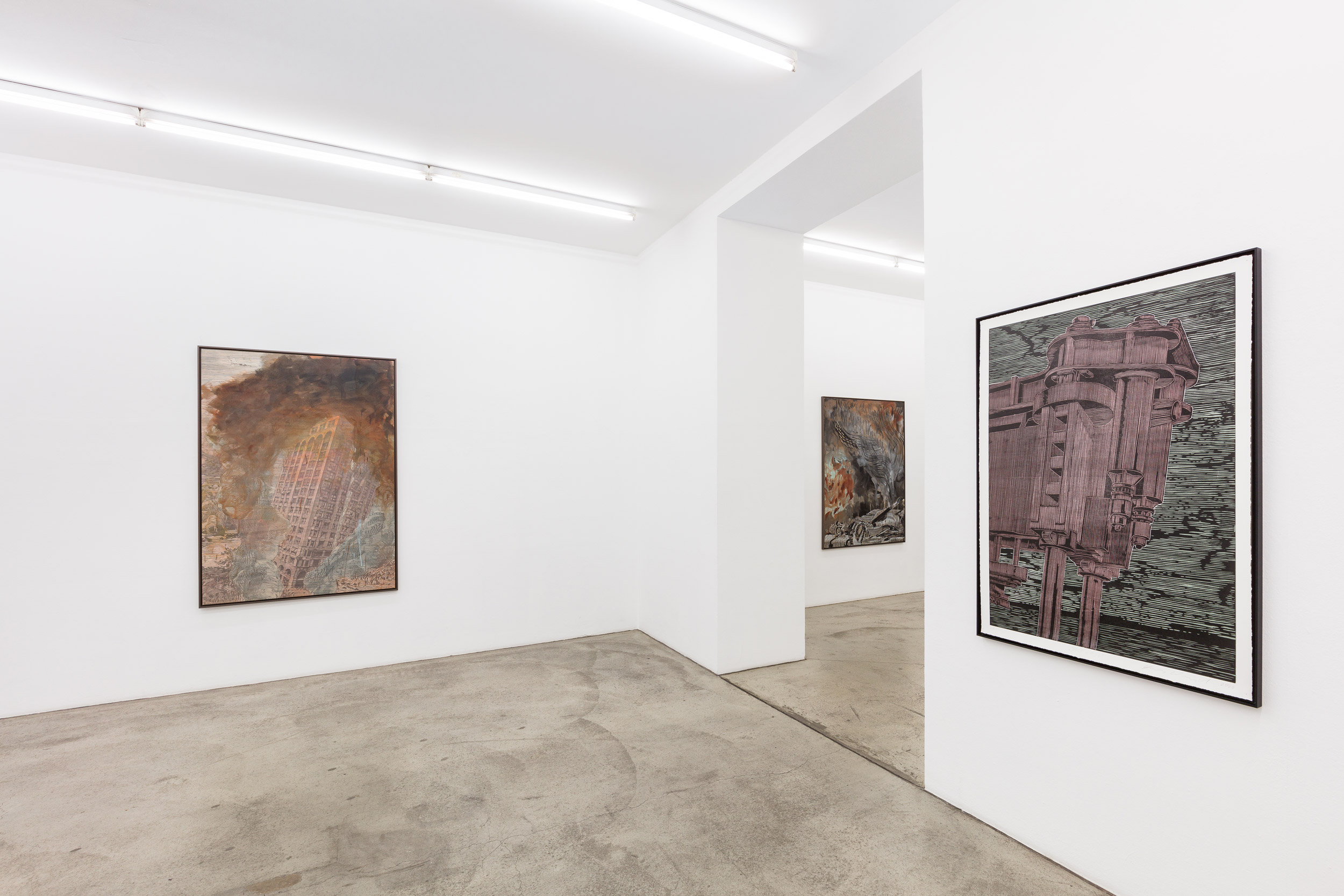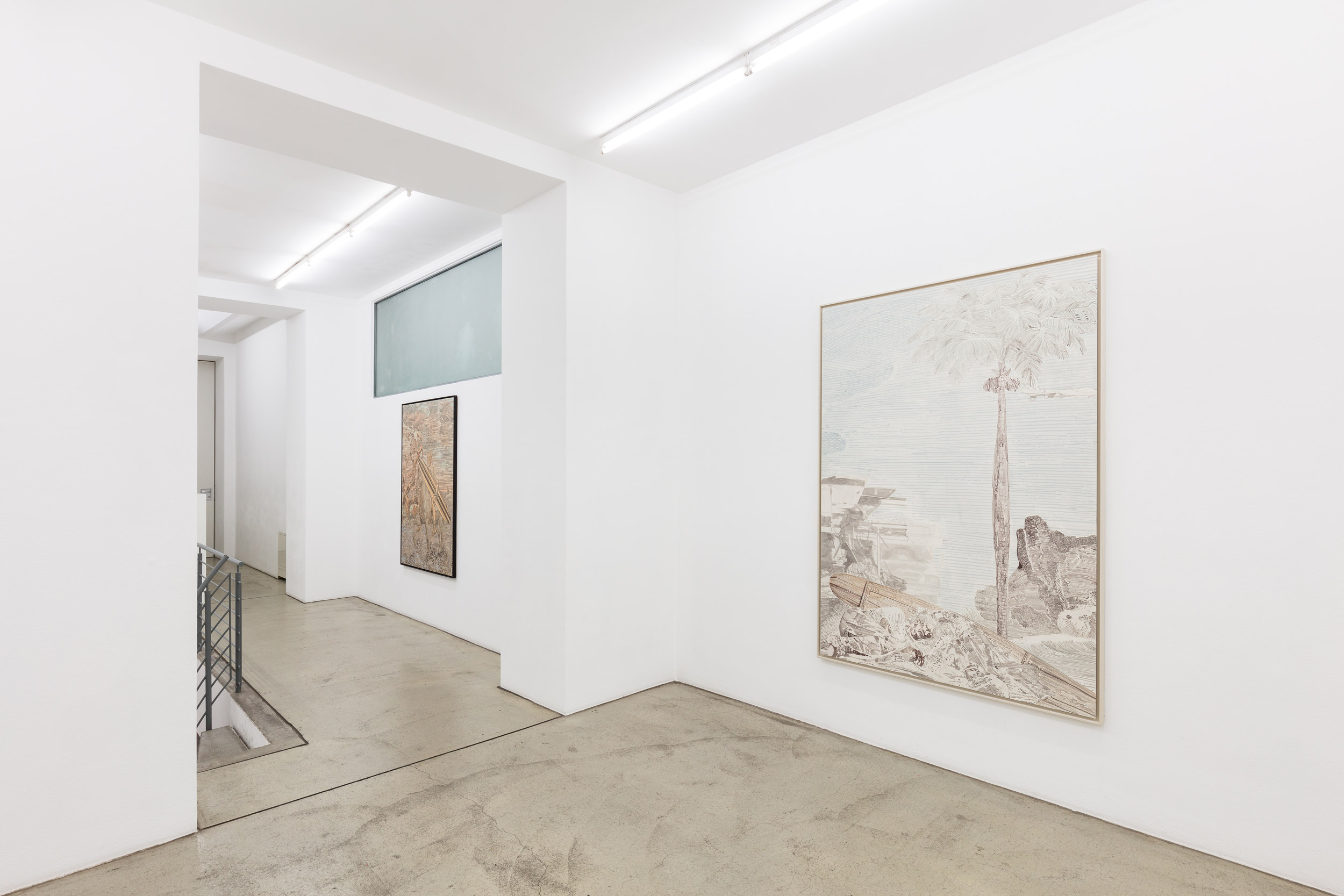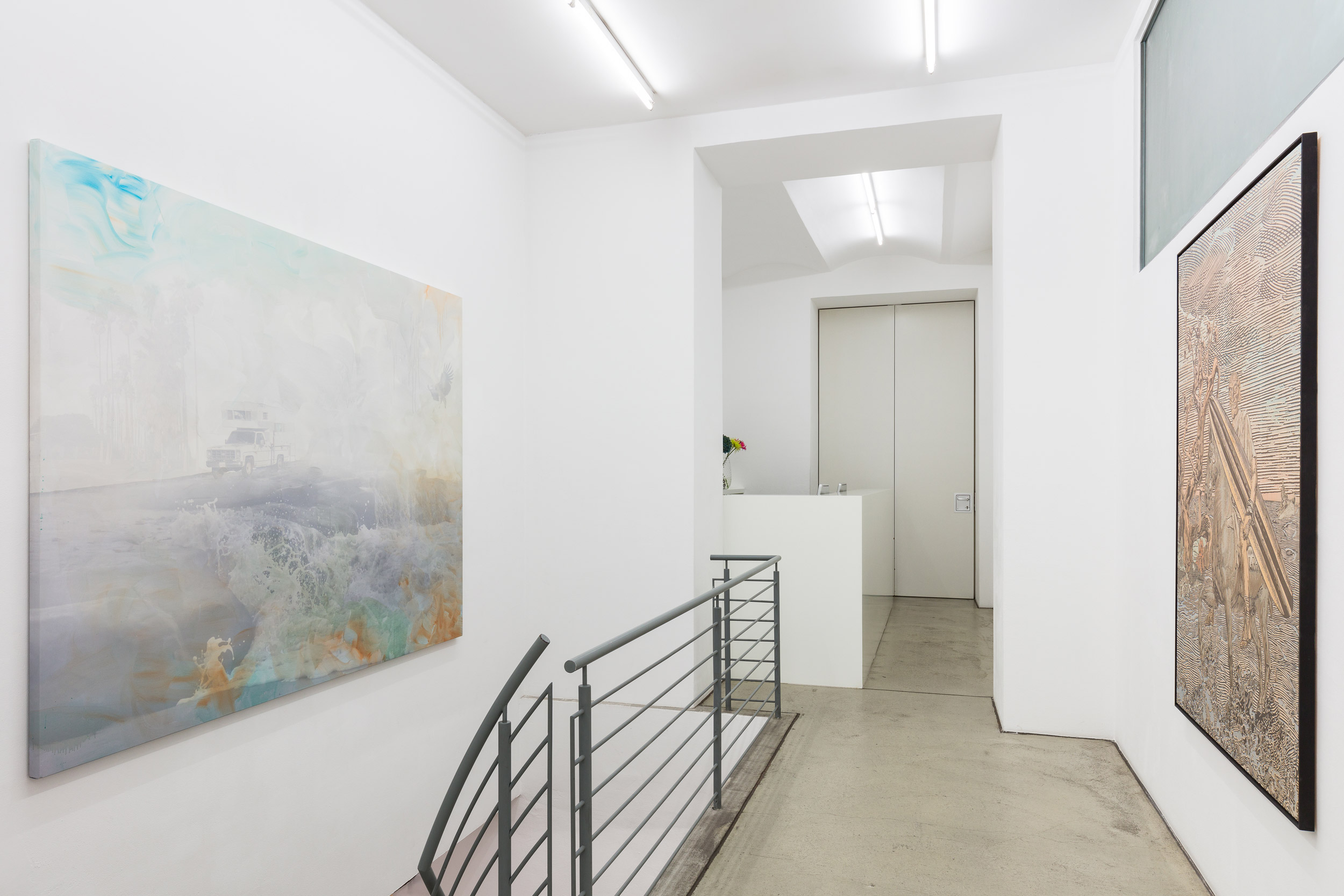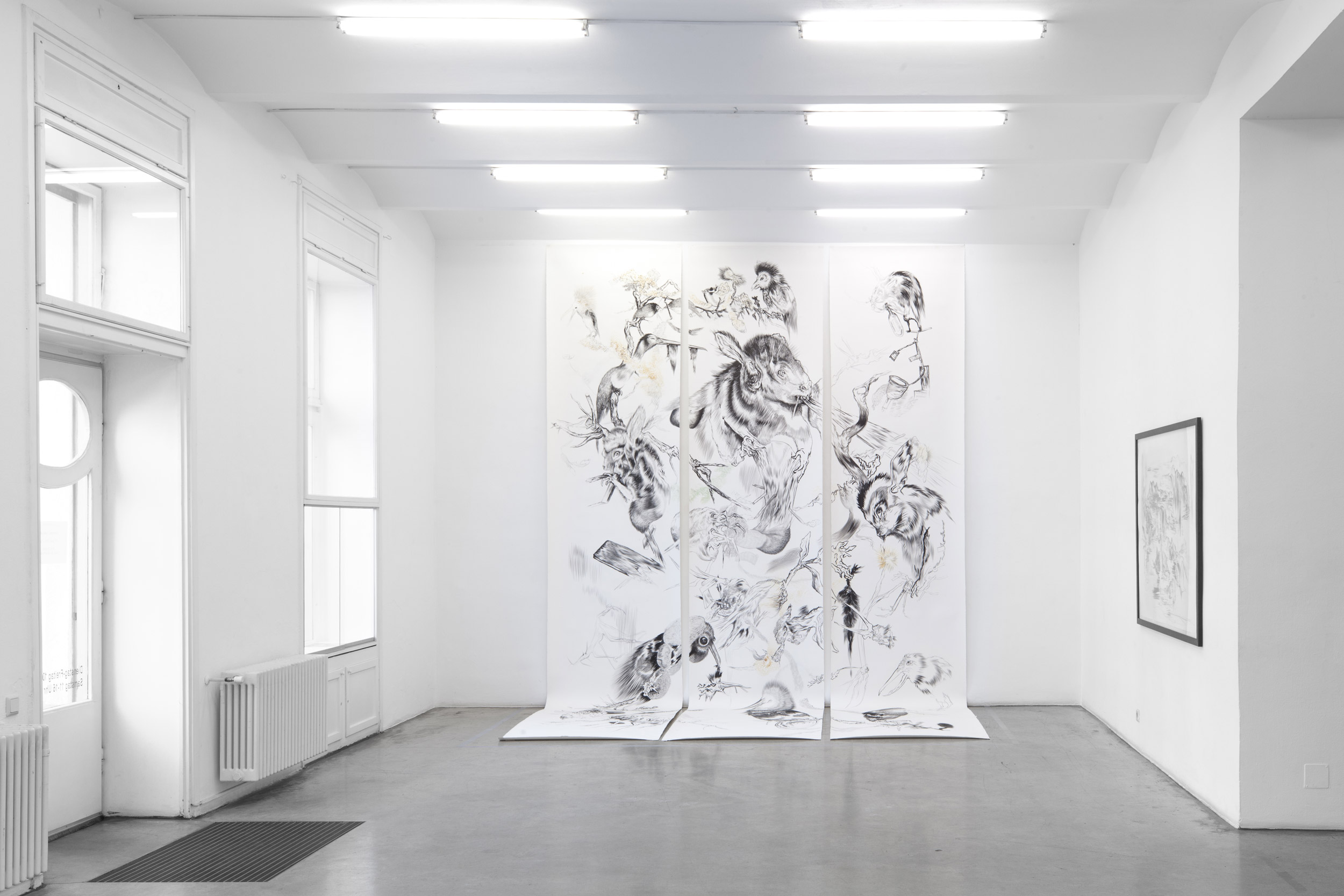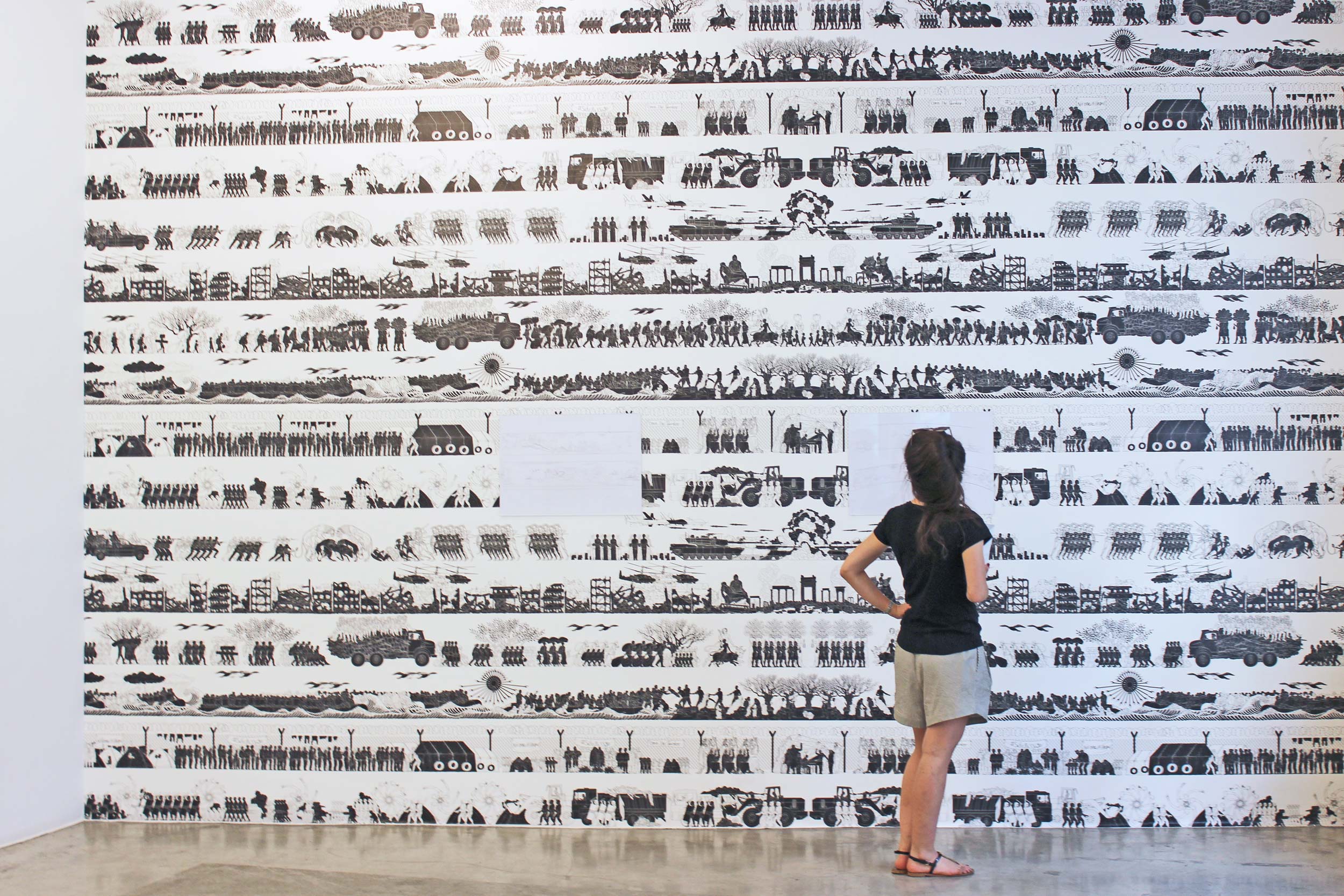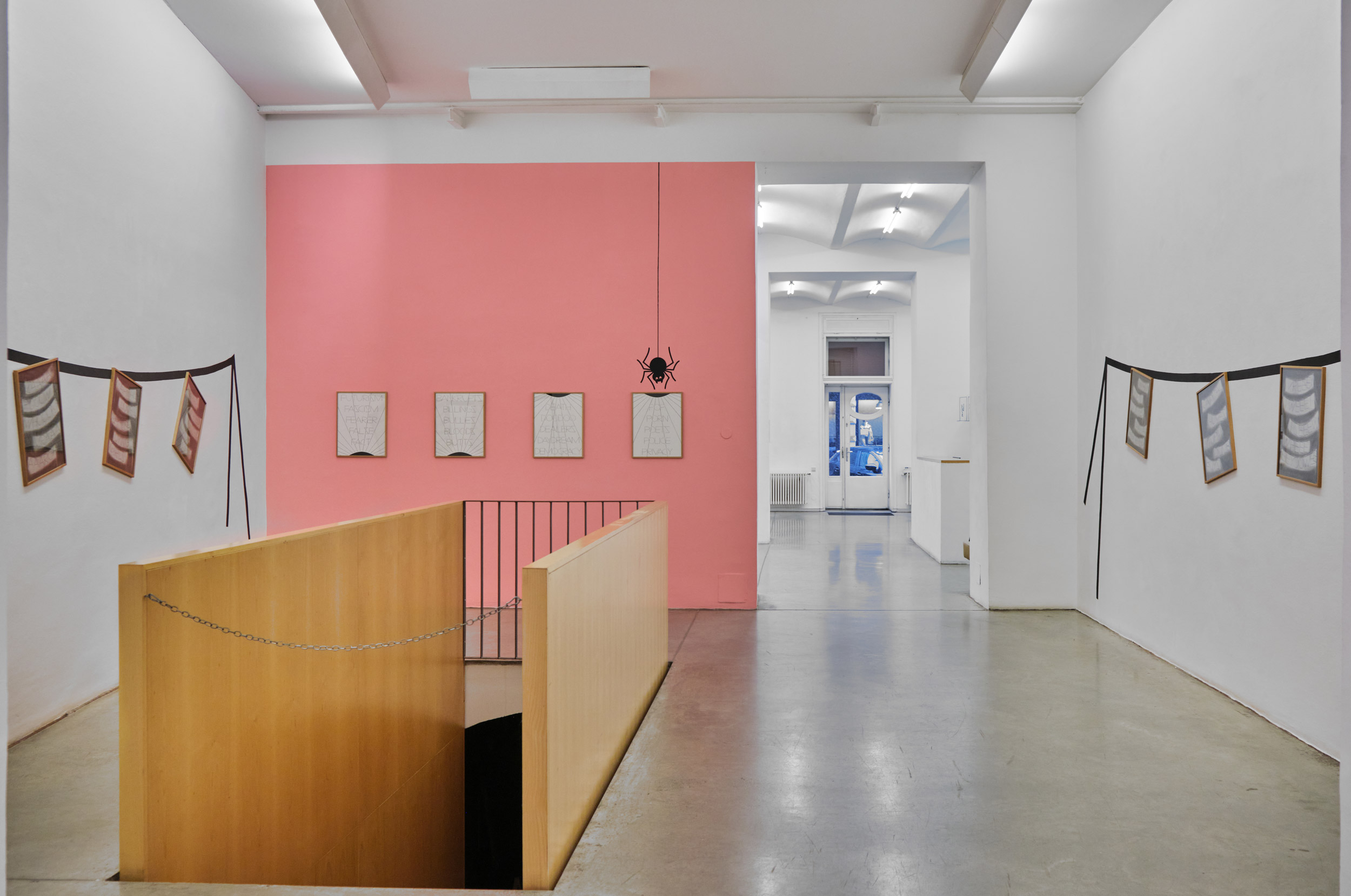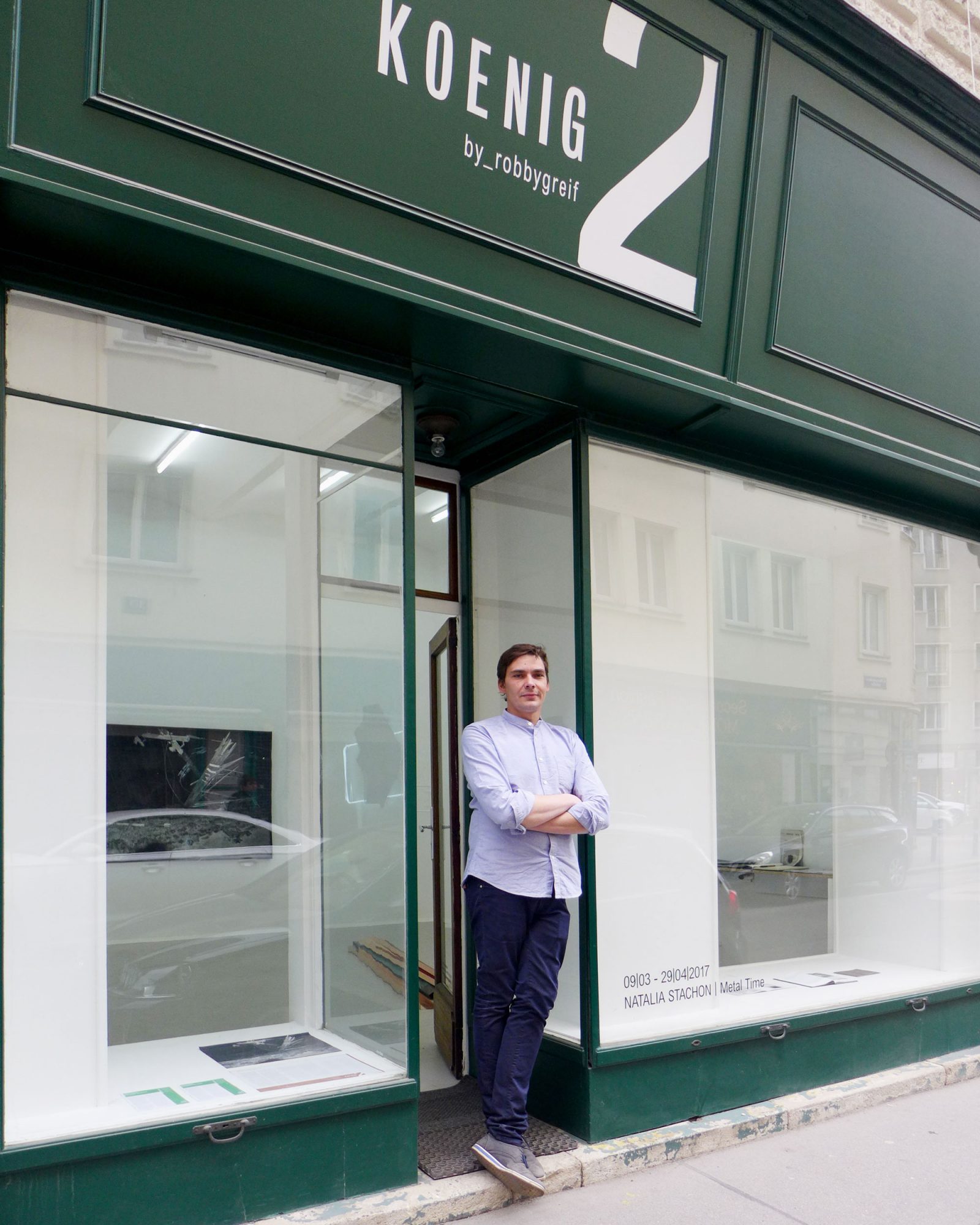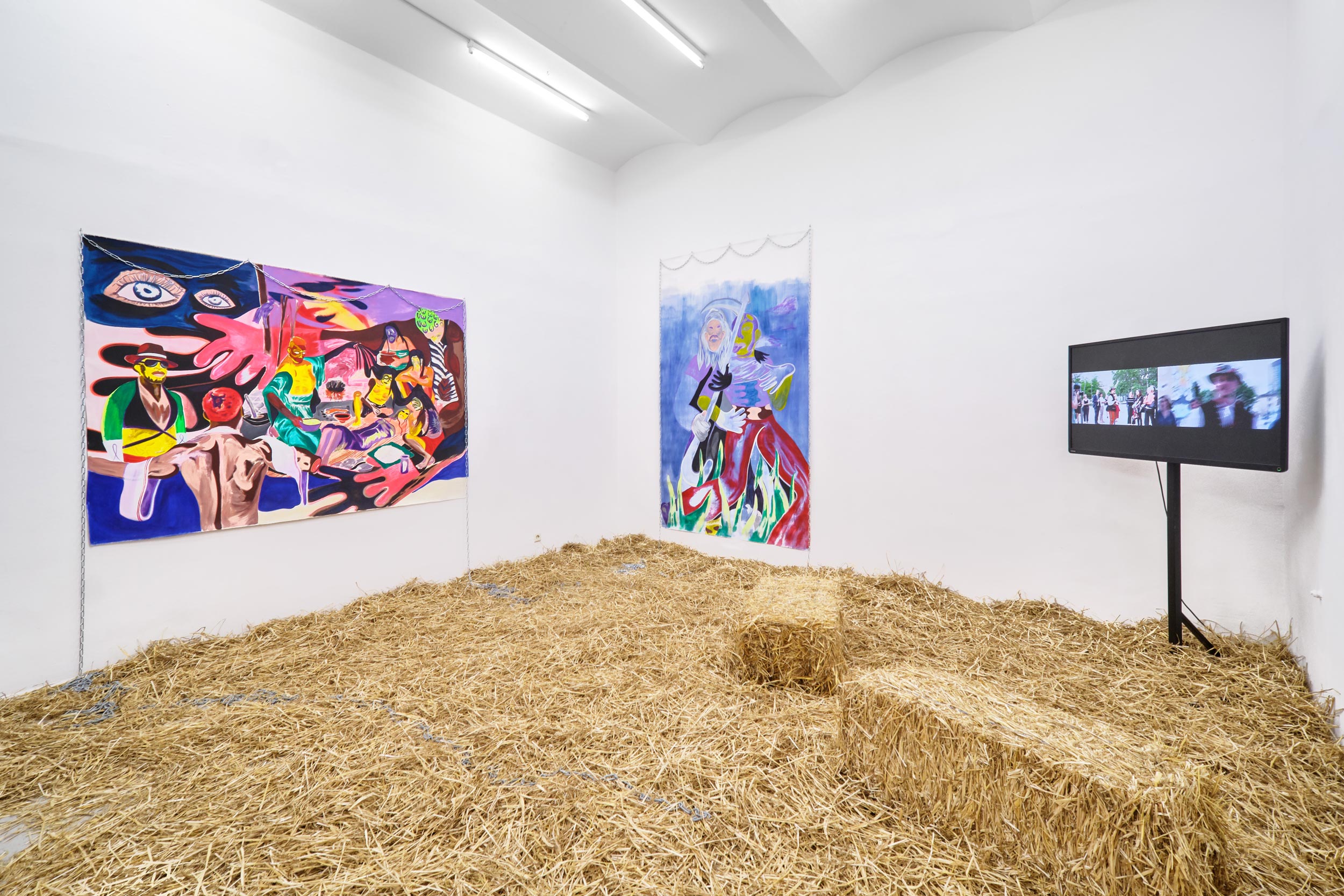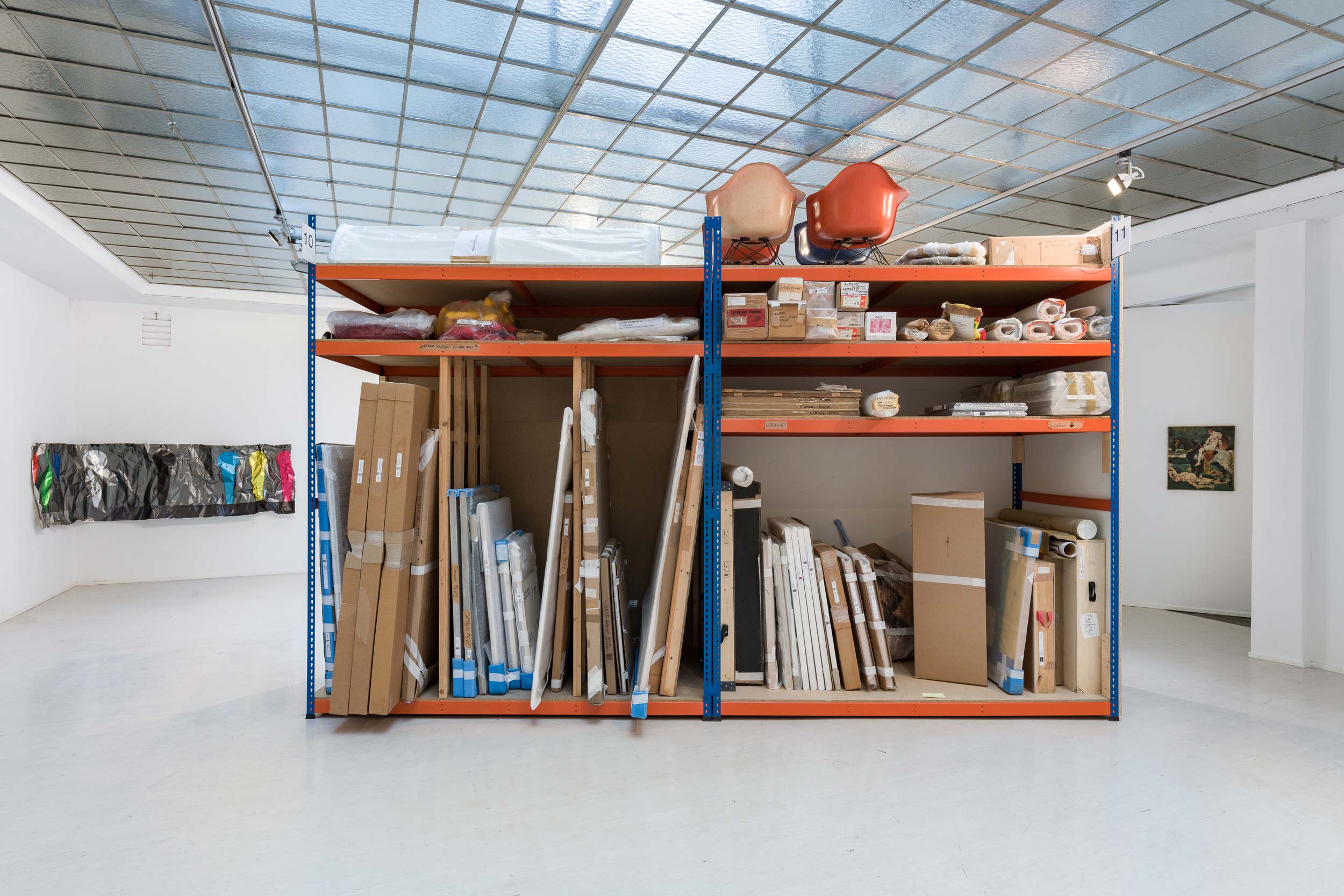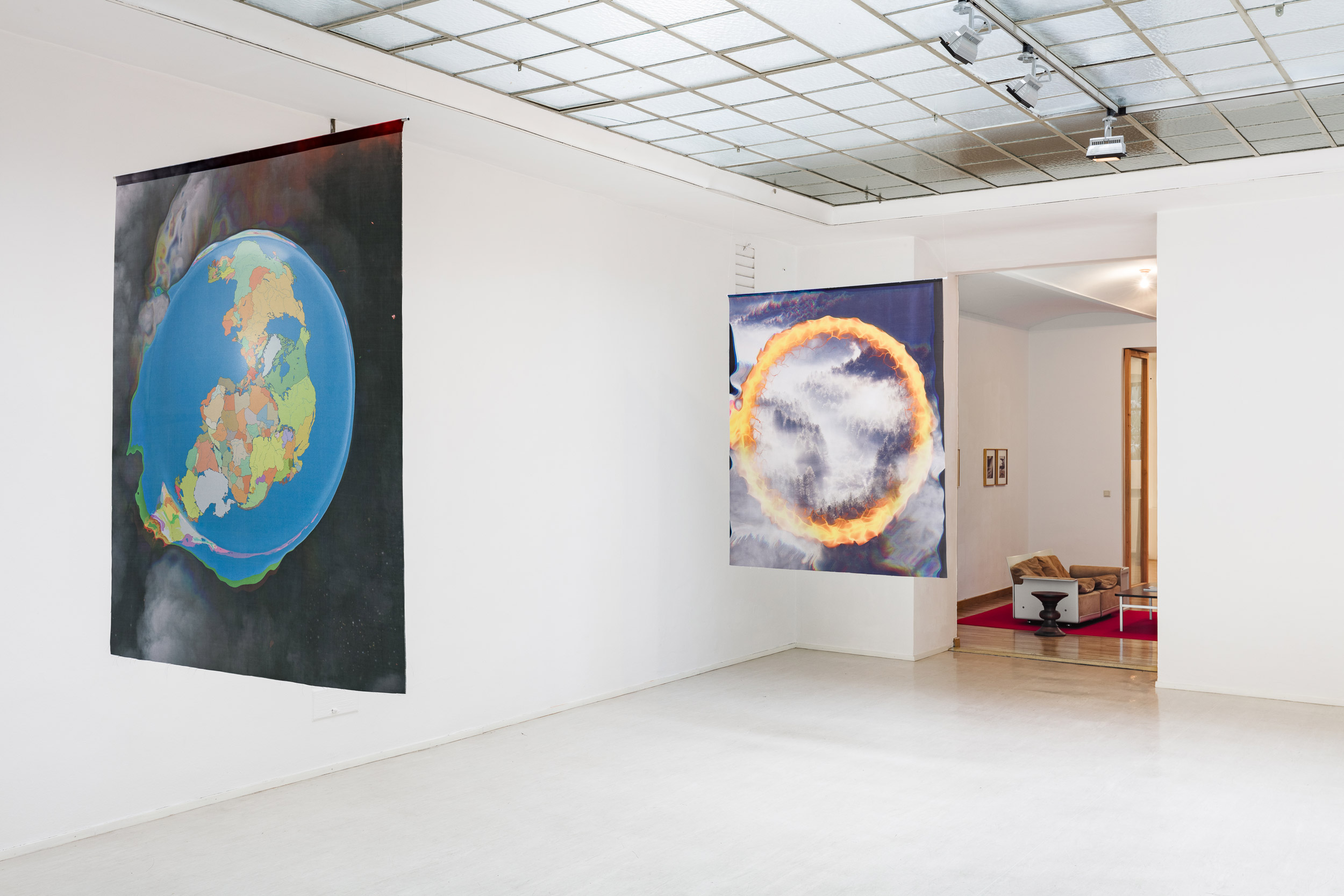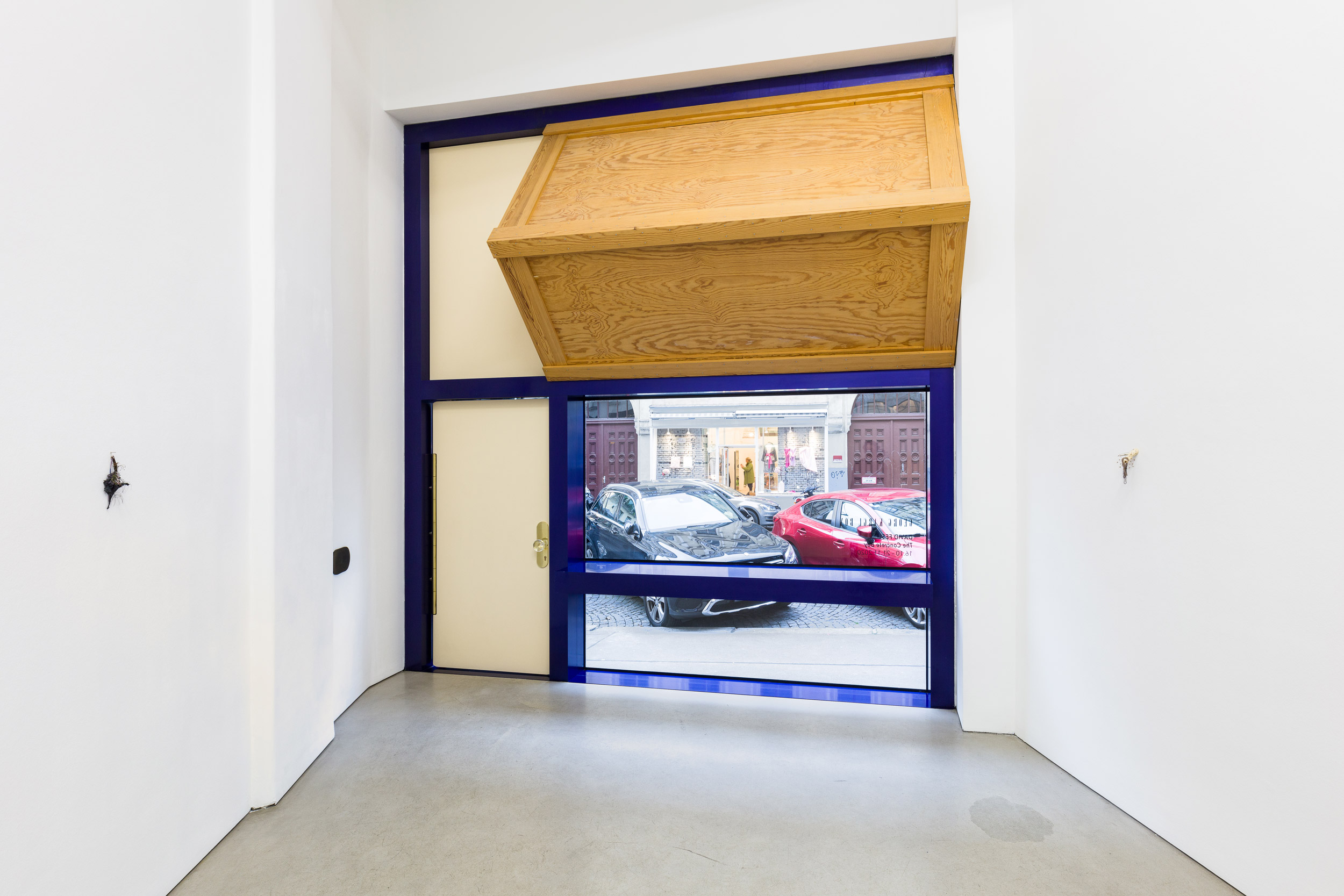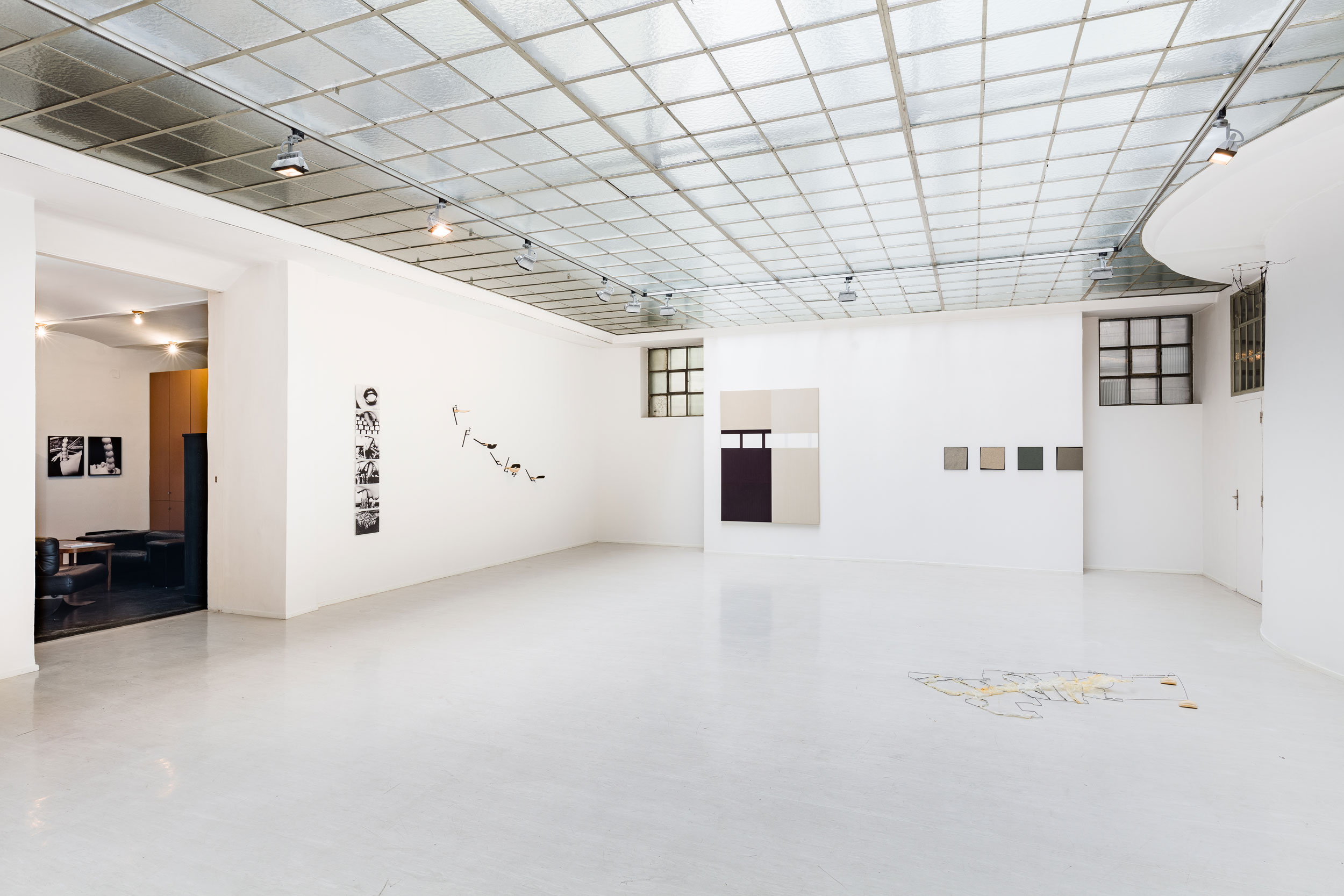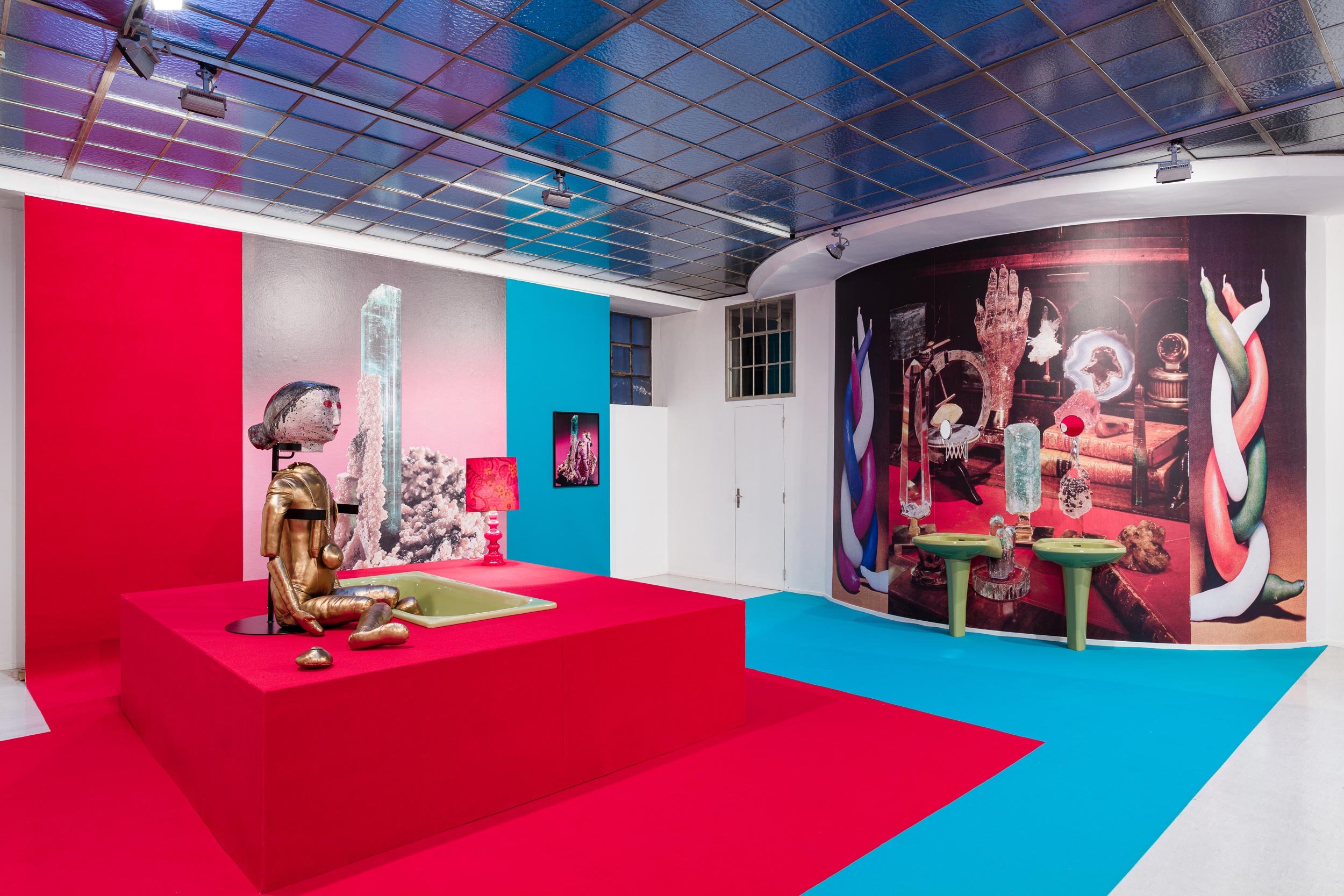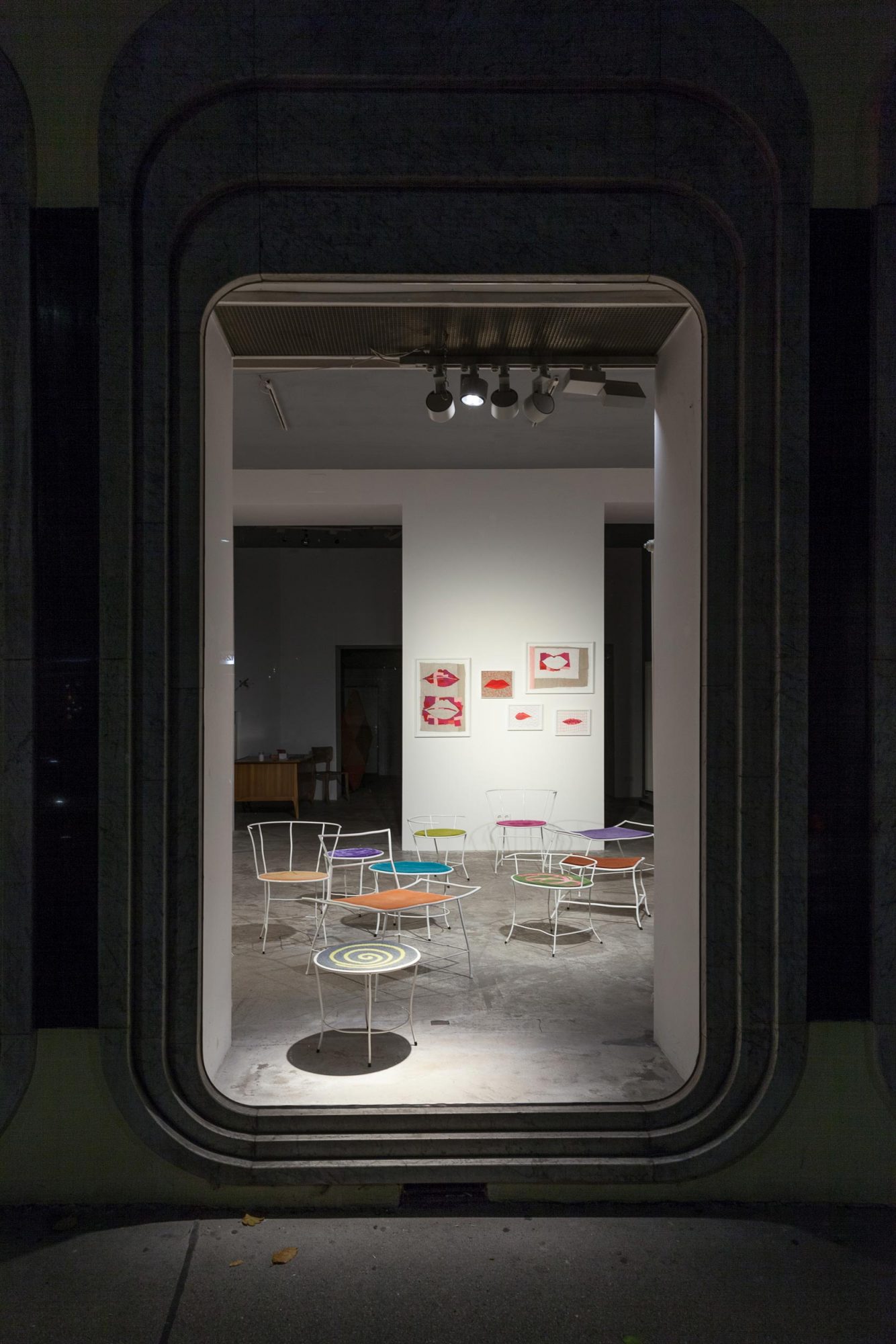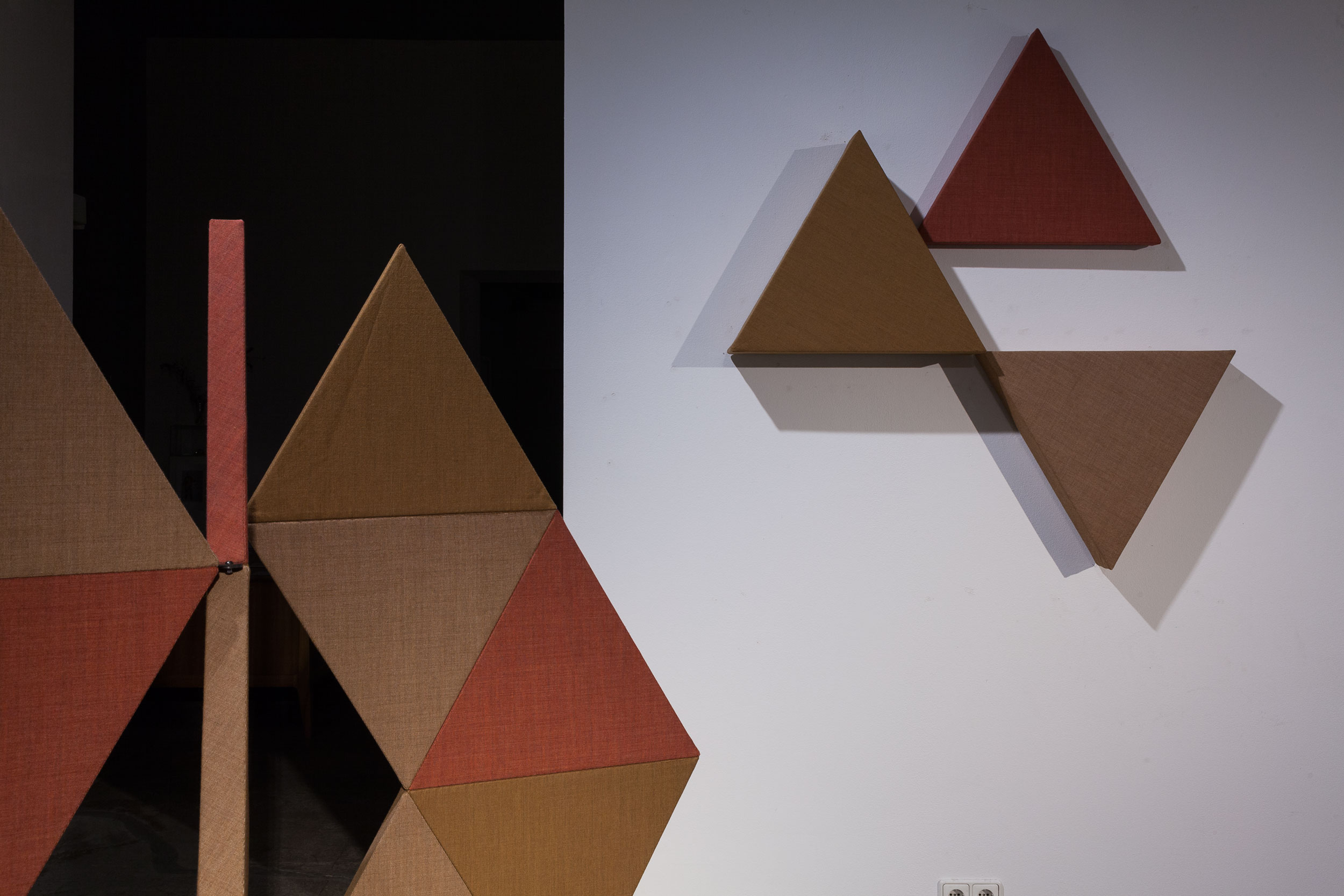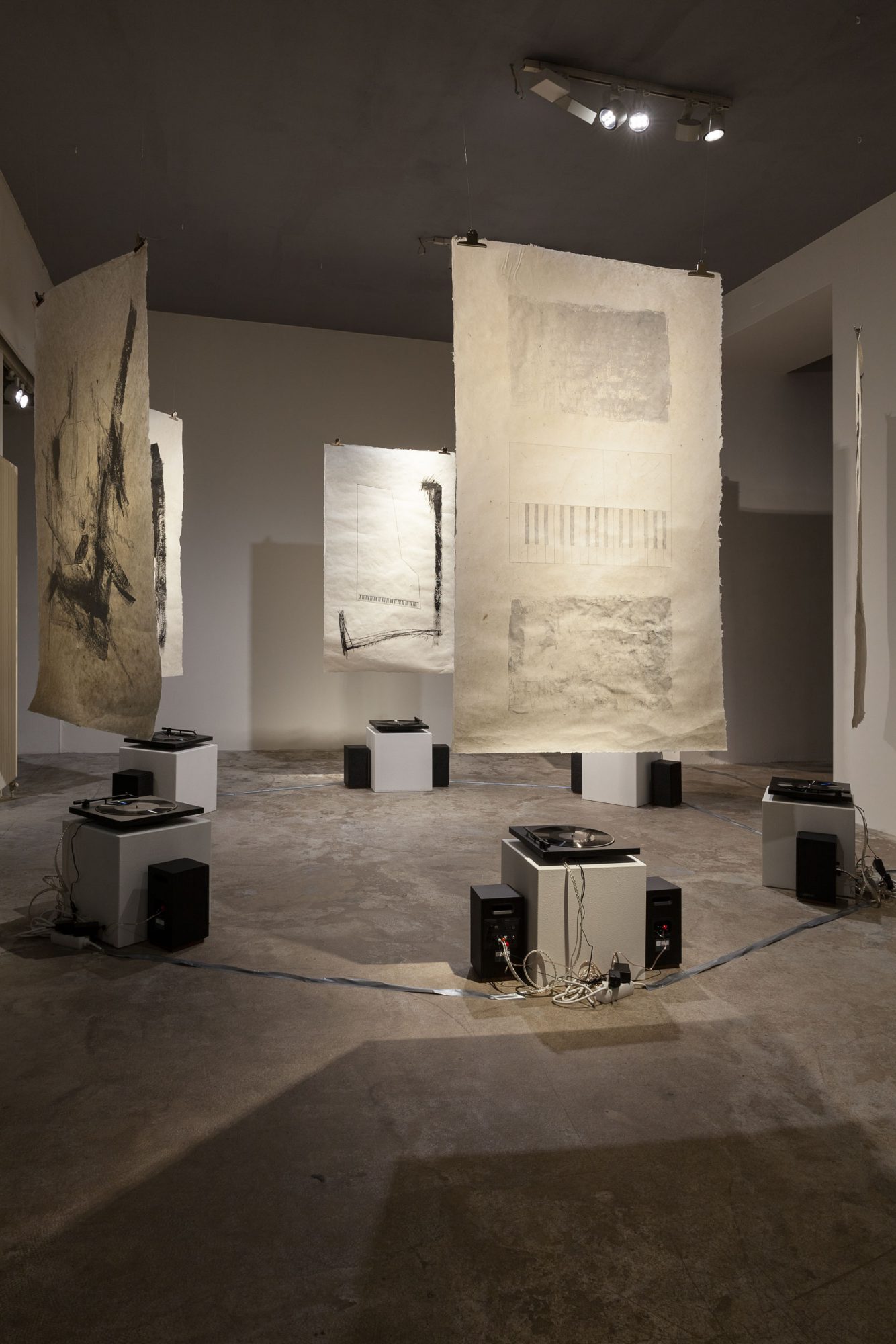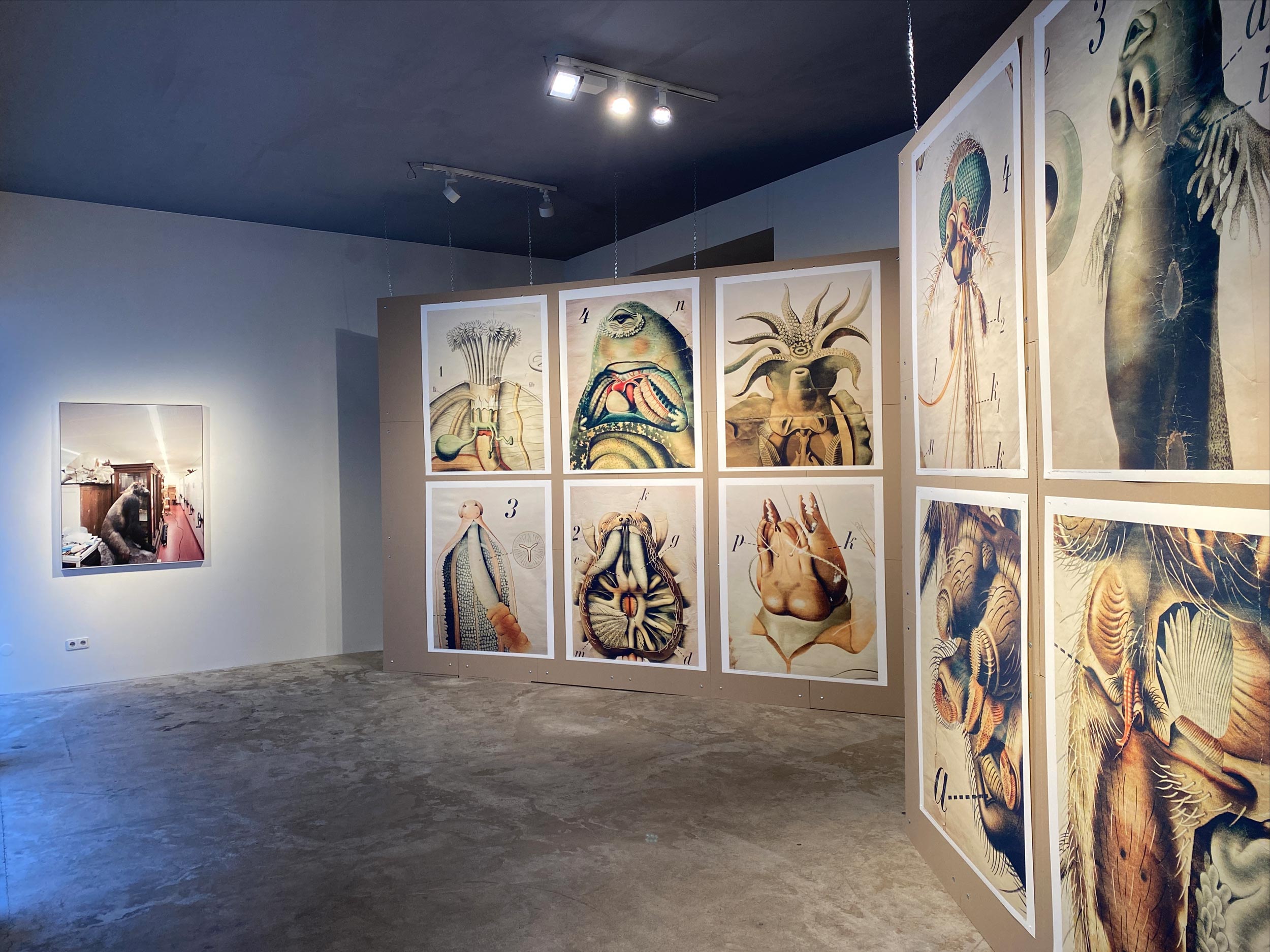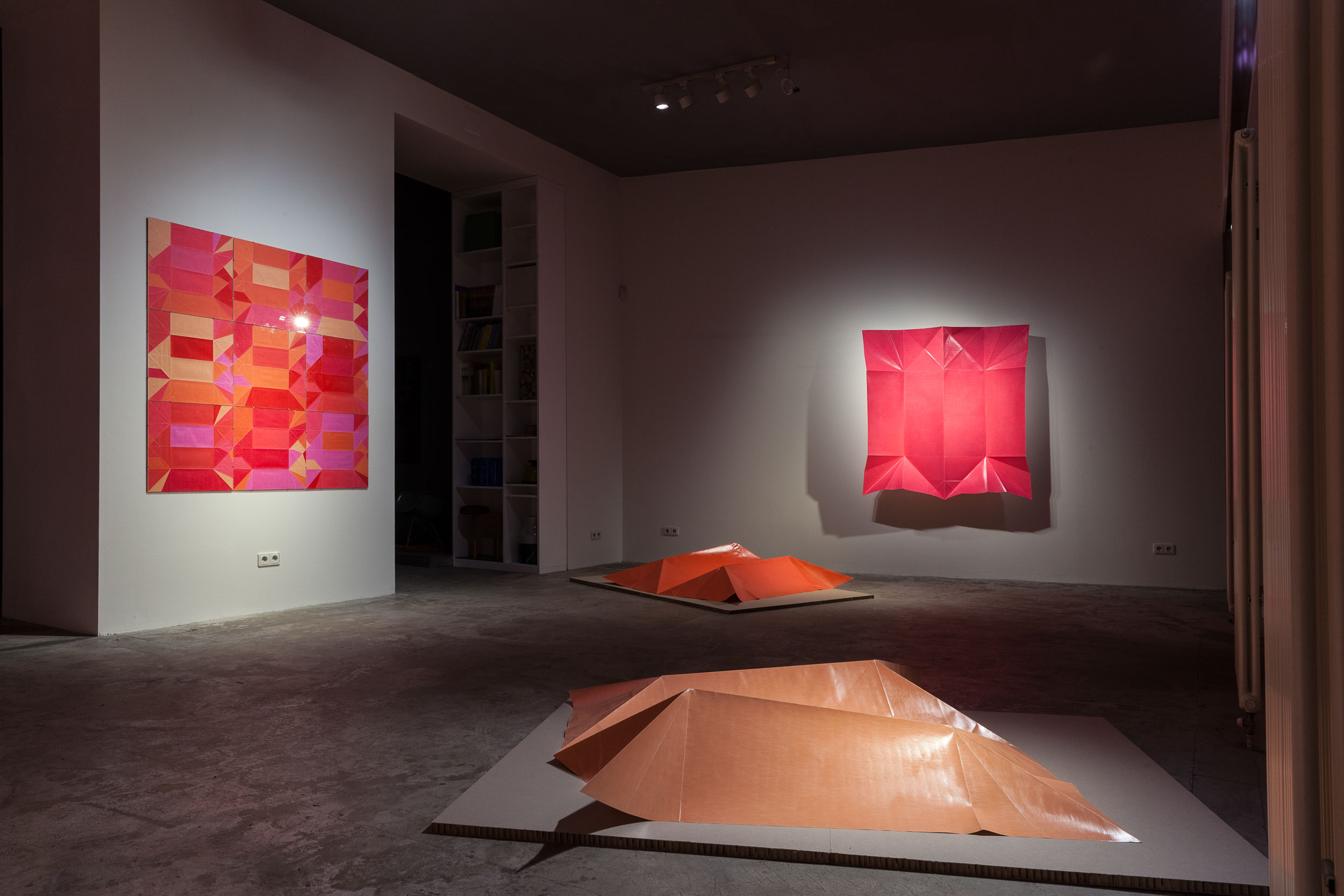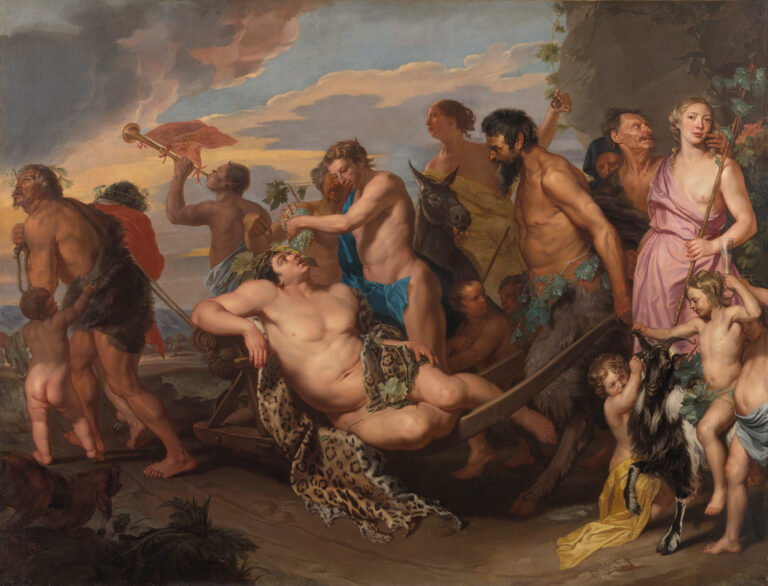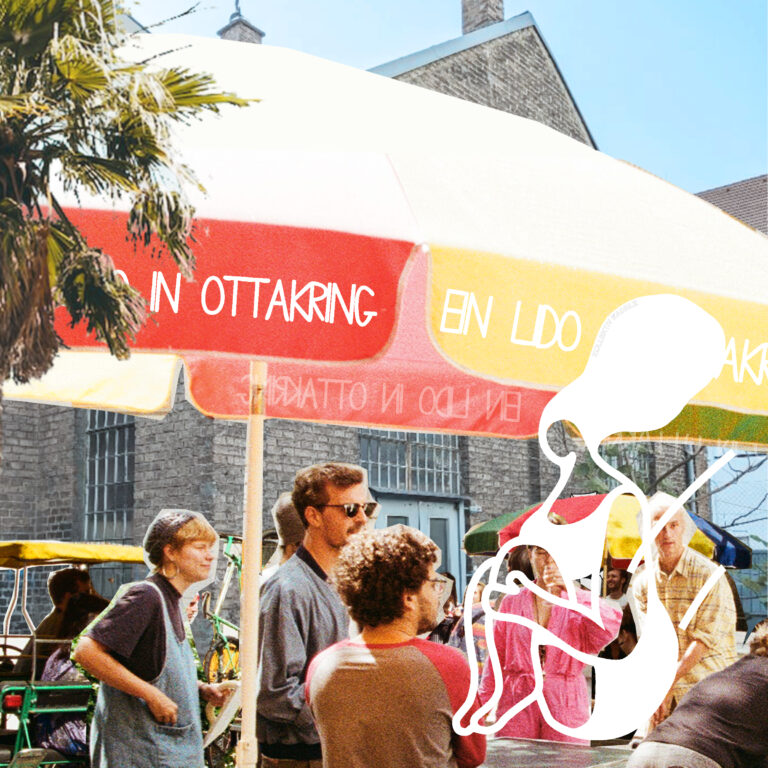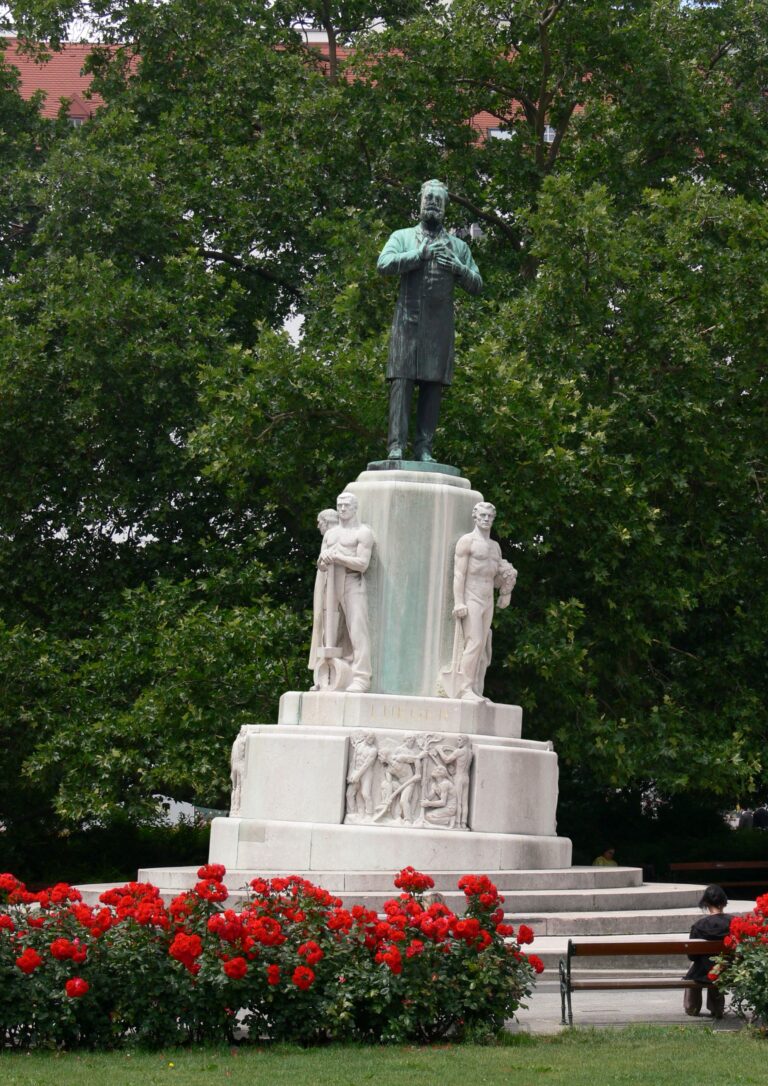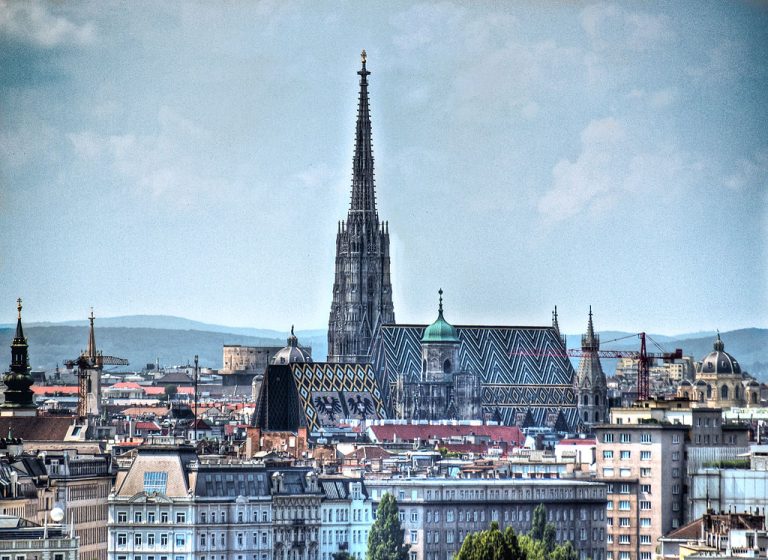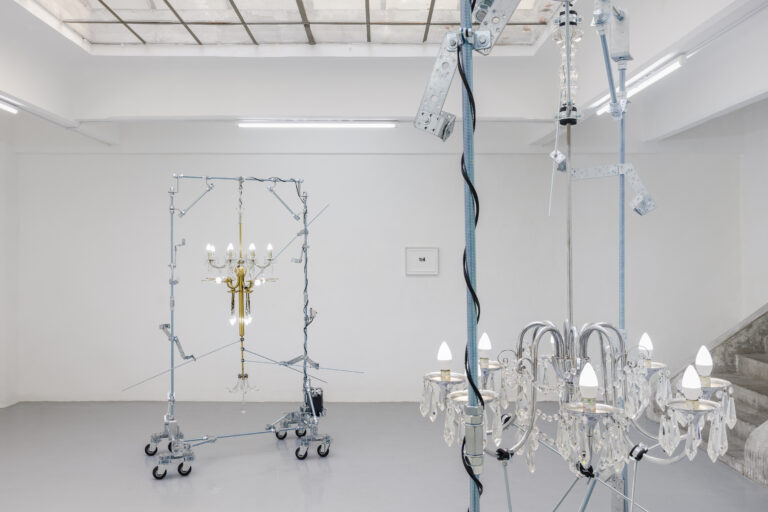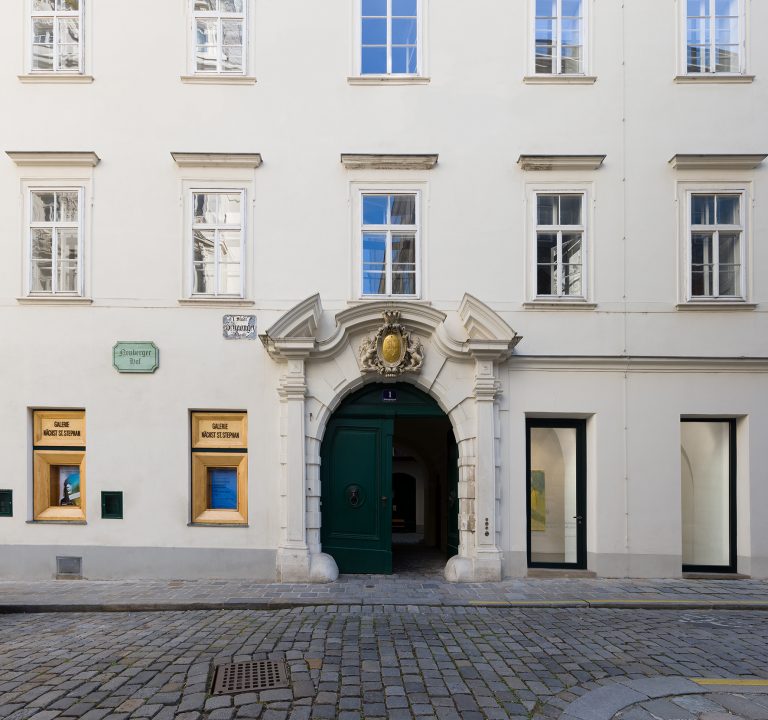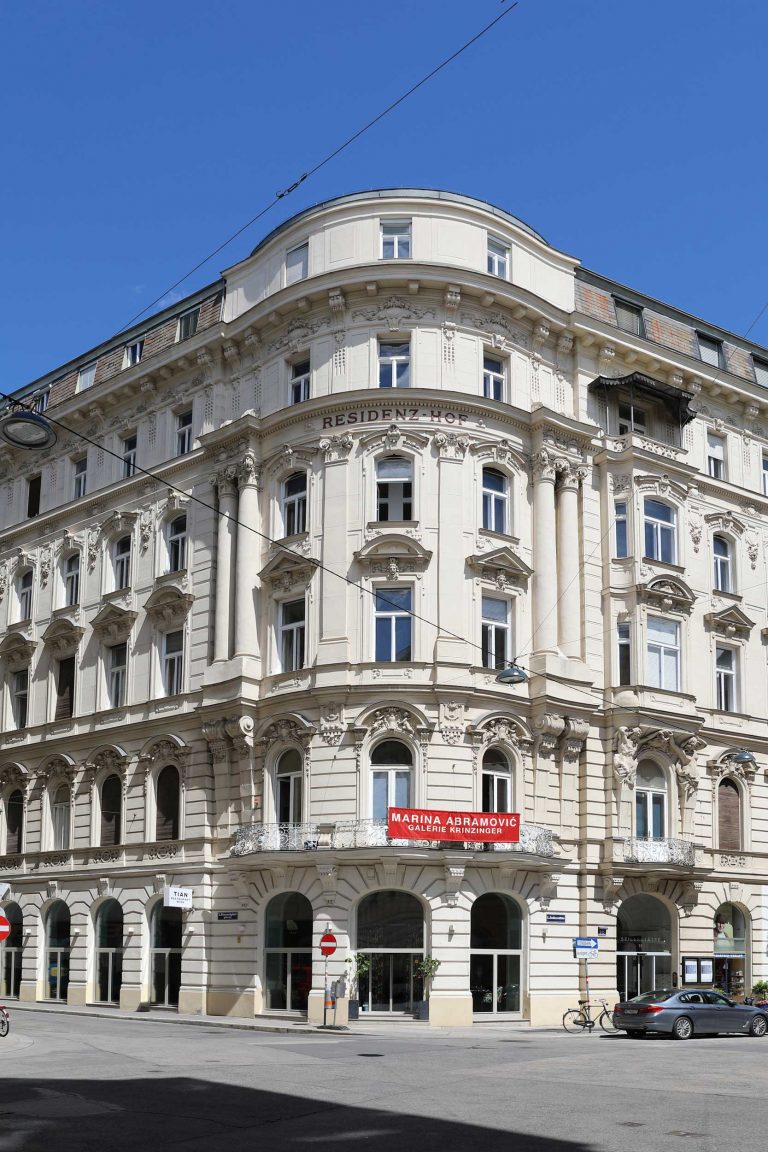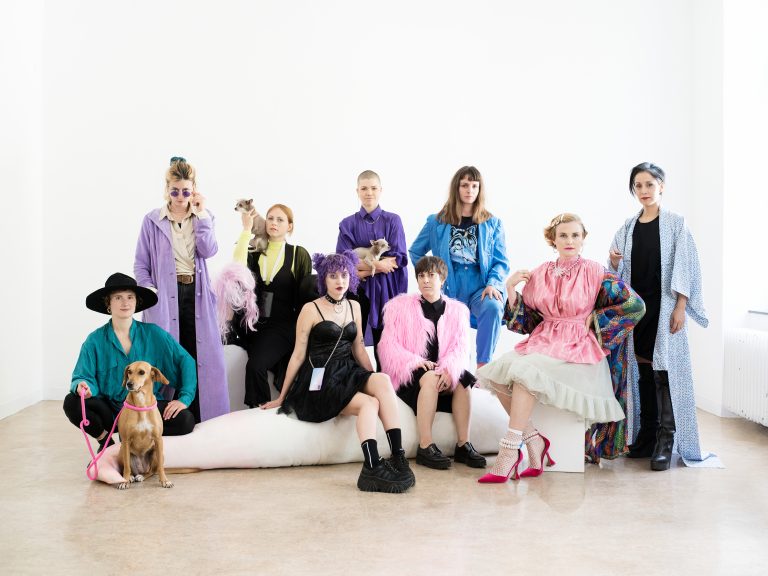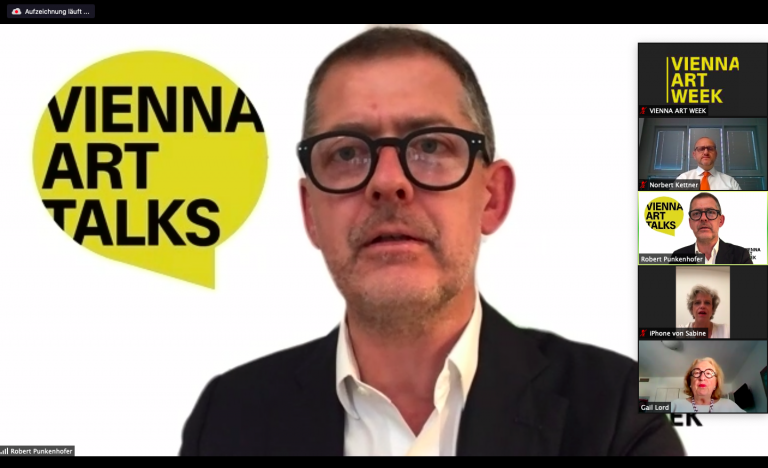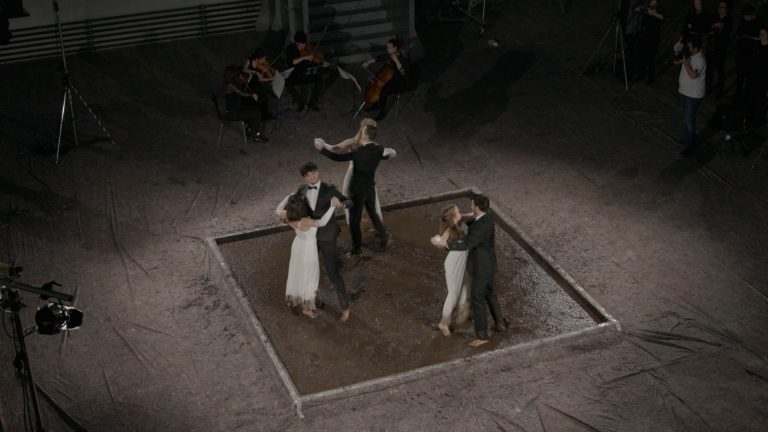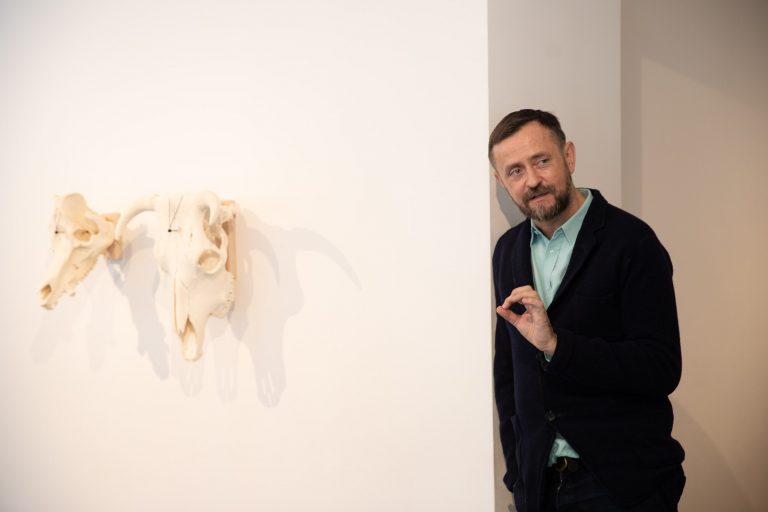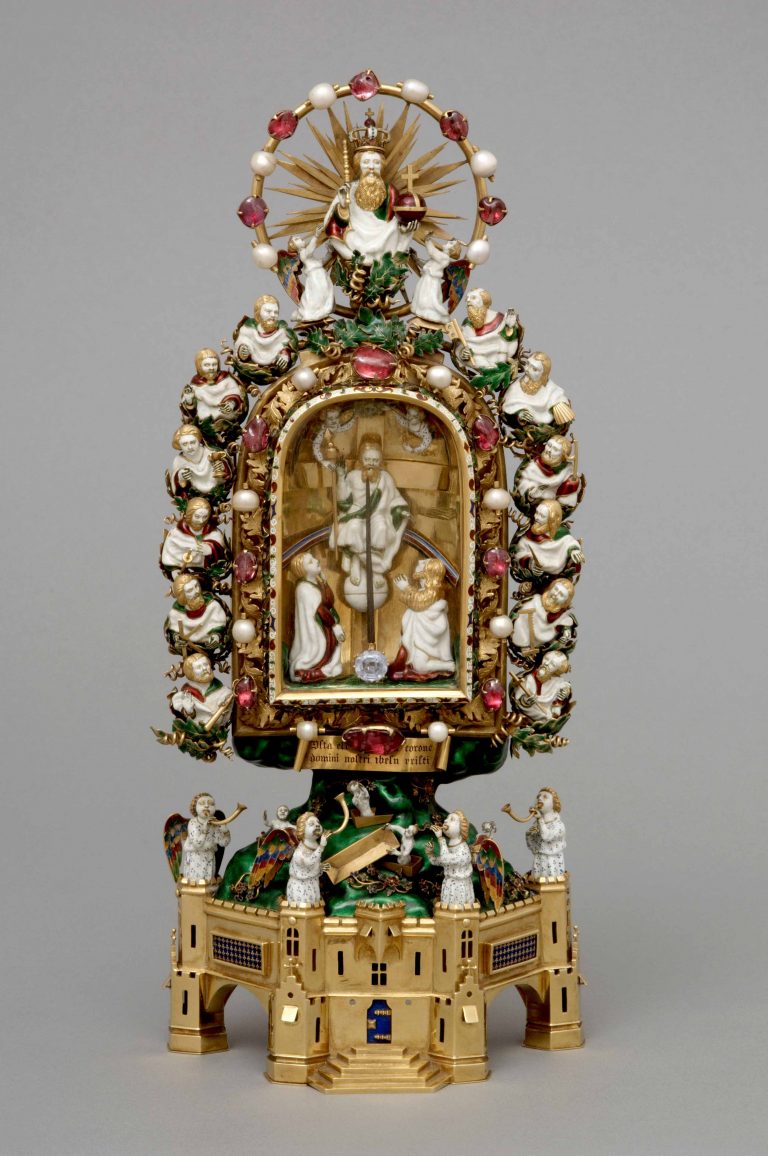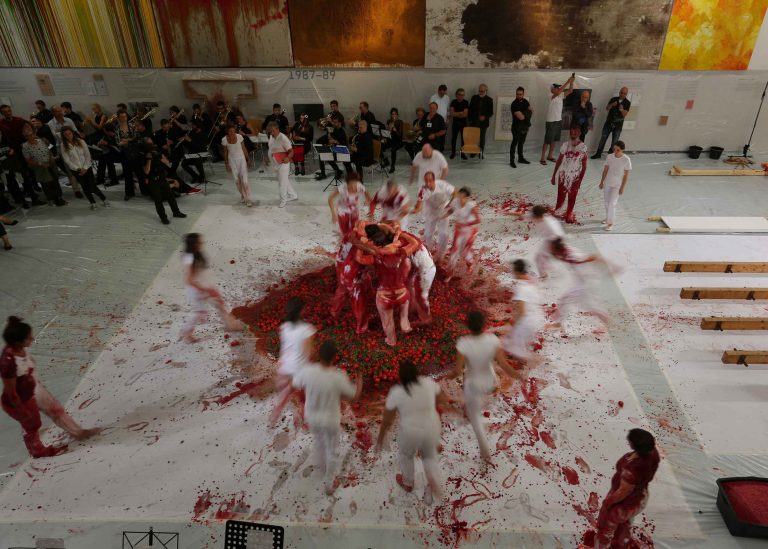A Gallery Tour through Schleifmühlgasse
Tour 3: Gabriele Senn – Christine König – Georg Kargl Fine Arts – Rauminhalt_Harald Bichler
A gallery tour with Maria Christine Holter.
Maria Christine Holter is art historian and curator for contemporary art in Vienna
www.mariaholter.at
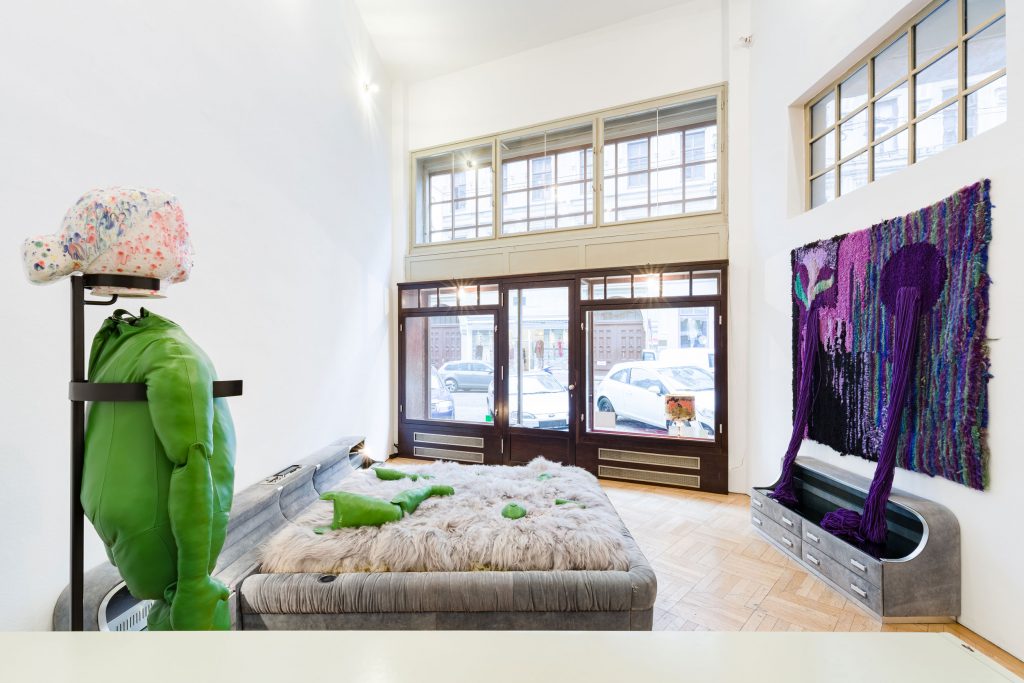
Jakob Lena Knebl, Ruth Anne, 2020, Georg Kargl Fine Arts, Wien
On the third gallery tour we follow the slightly curved course of Schleifmühlgasse in the so-called “Freihausviertel” of Vienna’s 4th district. The alley connects Wiedner Hauptstraße with the Rechter Wienzeile and is thus in the immediate vicinity of Nas-chmarkt, Karlsplatz and the Technical University. Shortly before the turn of the millenni-um, the Freihausviertel – named after the “Starhembergische Freihaus auf der Wieden” – was roused from its deep sleep, not least by the initiative of gallery owner Georg Kargl, who, with his own gallery opening, promoted the establishment of further art spaces and thus the gentrification of the district.* Today, art dealers, chic shops, cafés and trendy res-taurants are packed closely together. We have selected four top galleries for you, starting with the neighbouring gallerie.

Imi Knoebel, Russisch Brot I, 1999
When Gabriele Senn got her hands on books about Rembrandt and Picasso from her father’s library in her youth, her further life path took its course. Having ” escaped” from the Tyrolean provinces to Vienna, it led from studies at the College (now University) of Applied Arts with Oswald Oberhuber, to collaboration on a catalog of Franz West for the Museum of Modern Art Ludwig Foundation Vienna and numerous inspiring friendships with national and international artists to the founding of her own gallery in 1998. “The first location was in a former car showroom on Dominikanerbastei in the 1st district – an alleyway pub with large shop windows, which was still the exception in the scene at the time – a real stroke of luck for me!”
In the Viennese art landscape of the time, the Galerie GABRIELE SENN, as Senn sees it from today’s perspective, filled a gap left by the closures of the Peter Pakesch and Metropol (Christan Meyer and Georg Kargl) galleries. A friend drew the gallery owner’s attention to the vacancy at Schleifmühlgasse 1A. With the move to Wieden in 2000, SENN became part of the foundation of a new, lively art scene away from Vienna’s city center. “When I moved here, the Schleifmühl or Freihausviertel was still a rather neglected area: a few small stores and craft businesses just before retirement, apart from the Kargl, König and Engholm galleries, which had moved here before me,” Gabriele Senn recalls. “Where we are standing right now was the magazine of the Reichmann bookstore on Wiedner Hauptstraße. The beautiful door sign is still there, the bookstore unfortunately closed since 2011. Now Miriam Charim is occupying the front part of the former book warehouse as an addition to her downtown gallery, and I’ve added the back one.”
Gabriele Senn, the former president of the Association of Austrian Galleries for Modern Art focuses on international contemporary art in a wide variety of media, including painting, sculpture, photography, film and installation. The gallery’s artists include Elfie Semotan, Hans Weigand, Cäcilia Brown, Kathi Hofer, Josephine Pryde and Andy Hope 1930. Cosima von Bonin, a gallery artist from the very beginning, is also still represented with works at SENN.
galeriesenn.at
1040, Schleifmühlgasse 1A

CHRISTINE KÖNIG, Ausstellungsansicht TIMEZONE, curated by_Giulia Ferracci, Christine König Galerie, Wien 2016 © eSeL.at
Christine König succinctly formulates the agenda of her renowned gallery. Her answers to other questions are also brief. Much has already been said and written in her 32 year-career as a gallery owner. She has given dozens of interviews, most recently yet again in a renown Austrian quality magazine. And gendering is far from the mind of the studied Germanist, because true feminism is not recognised by the inward I, but by the attitude and the way people treat each other – also in the art business.
König, on the other hand, is more forthcoming and full of respect when she talks about her colleague Georg Kargl, who died in 2018. Like Senn, she owes the initiative to move the CHRISTINE KÖNIG GALERIE, which had existed since 1989, from the 1st district to the Schleifmühlviertel in 1999 to Kargl: “The shop windows of a former piano factory were still covered with wrapping paper, but when I saw through the slits that the spacious rooms extended continuously from the street to the inner courtyard, I immediately agreed. Architect Luigi Blau did the planning, it’s thanks to him that the gallery-space is prepared for EVERYTHING, so to speak.”
A lot of positive and innovative things have happened in more than 20 gallery years in Schleifmühlgasse besides the exhibition activities and countless international fair participations: from discursive mediation formats such as the “LunchLectures” that took place weekly until 2006 and the interdisciplinary “Conversations” that have been held irregularly since 2008 to the expansion of the gallery with the experimental space “KOENIG2”, which has been managed by senior director and business partner Robby Greif, a dynamic ex-Berliner, for more than four years. “Young art creates an exciting cross-over of generations, also in the audience,” Greif says in harmony with König. In the approximately 5 x 5 x 4 metre white cube of KOENIG2 at Margaretenstraße 5, which can only be entered by prior contact and with the personal assistance of the gallery owner or the exhibiting artists (but which is visible around the clock), the mediation work that Greif generally has in mind takes place in a low-threshold manner: “The spark jumps naturally!
The selection of artists at both gallery locations is based on themes that have always been relevant to Christine König and that Robby Greif is well able to support: Politics and activism, feminism, literature, post-conceptual approaches. Thus the list of artists – only excerpts of which are given here – reads like a logical closing statement to which nothing can be added: Ai Weiwei, Magda Csutak, Jimmie Durham, David Hammons, Alona Rodeh, Gerhard Rühm, Nancy Spero, Toni Schmale, Juergen Teller,…
christinekoeniggalerie.com
1040, Schleifmühlgasse 1A
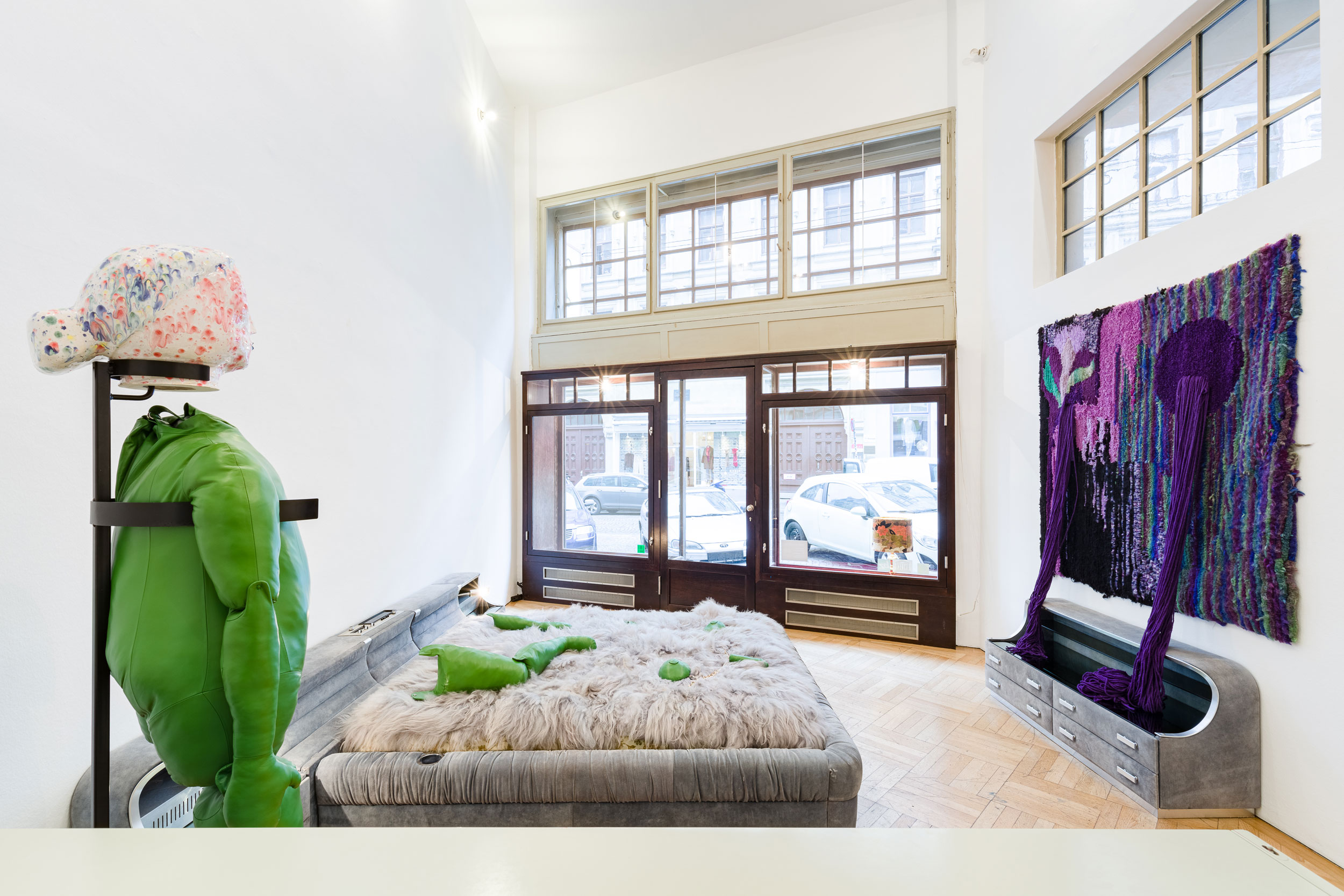
Jakob Lena Knebl, Ruth Anne, 2020, Georg Kargl Fine Arts, Wien
GEORG KARGL FINE ARTS can confidently be called “primus inter pares” within the Freihausviertel gallery scene. After all, the founder Georg Kargl, who died in May 2018 and was one of the most influential and controversial figures in the scene, triggered a veritable gallery, off-space and local boom away from Vienna’s city centre on Wieden with his new start in 1998 in an abandoned print shop in the Gründerzeit building Schleifmühlgasse 5, built by Ernst Epstein in 1910/11. With the arrival of the König, Engholm and Senn galleries at the turn of the millennium, a flurry of art spaces came and went, which also continued in the lower part of Schleifmühlgasse towards Naschmarkt.
For three years now, Kargl’s wife, the Brazilian-Austrian artist Inés Lombardi, and her dedicated team have been running the gallery, which had expanded during Kargl’s lifetime by the addition of BOX (with a façade design by Richard Artschwager) in 2005 and PERMANENT, the gallery’s experimental space, in 2006. PERMANENT was originally intended as an exhibition space for long-term presentations. Lombardi prefers to define it as an open space for exchange with local and international, mostly young positions that are not necessarily connected to the gallery programme. The new direction was launched in 2018 with an exhibition by Jakob Lena Knebl.
“I continue the continuity of the gallery with a programme that I complement with my personal vision – this also includes new and younger positions,” Lombardi elaborates on her concept. “The lockdown has caused a break with the known and accelerated change. The economic uncertainty of our time requires flexibility, innovation and also the dissolution of familiar paths. We are in a process of change that gives us an opportunity to find new ideas for what comes next.”
With artists such as Rafal Bujnowski, Mark Dion, Peter Fend, Herbert Hinteregger, Andreas Fogarasi, Jakob Lena Knebl, David Maljkovic, Agnieszka Polka, Rosa Rendl, to name but a few, GEORG KARGL FINE ARTS will continue to excel in this respect.
georgkargl.com
1040, Schleifmühlgasse 5
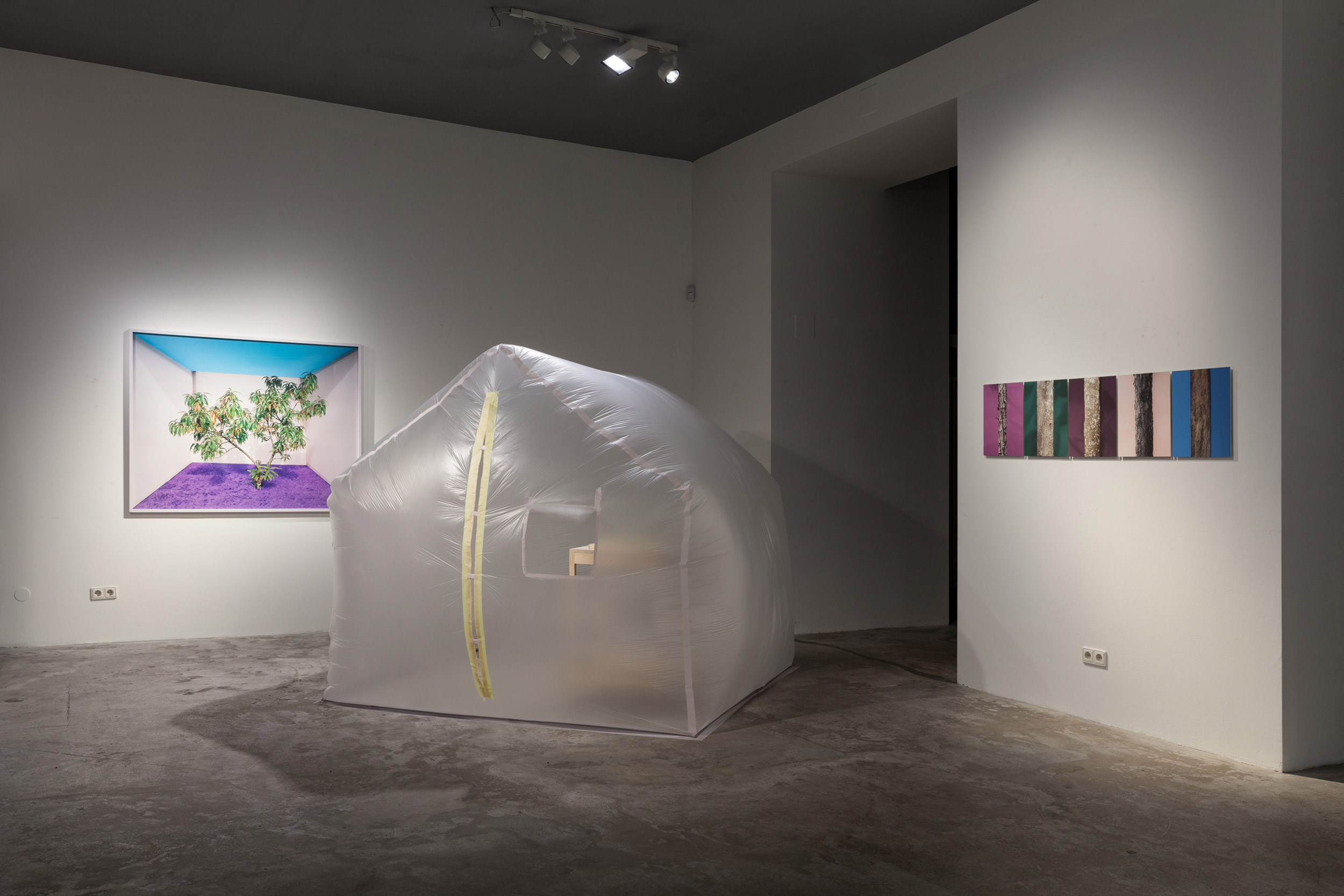
Ausstellungsansicht: InExterieur, Markus Guschelbauer © rauminhalt_harald bichler
Harald Bichler, owner and director of the RAUMINHALT gallery, is visibly irritated that in times of pandemic art and culture are relegated to last place. For him, they are an elixir of life! Fortunately for him, he grew up in a family where aesthetic sensibility was lived naturally and his creative urge to rearrange the furniture in the flat regularly was rarely restrained: “Even as a child, I had a physical discomfort when things were ‘wrongly’ placed or hung. These psychosomatic pains still afflict me often today…”, the gallery owner says with a laugh.
Since 2003, Bichler has been running his space at Schleifmühlgasse 13 as an interface between architecture, design, visual art and science. “What inspires me in my work is the dialogue, the cross-fertilisation. I want to bring together visionary ideas from all areas of art and science – for me, art production is vision in action!”, enthuses Bichler, who himself has a background in the natural sciences and now has a tightly knit interdisciplinary network. He sees himself committed to this holistic approach in the future, especially in times of uncertainty and crisis.
Last spring, Bichler developed the exhibition format “Unter Vorbehalt” (Under Reservation) so that art would not be degraded to elitist pleasure and would remain accessible to everyone even during the recurring lockdowns. From May 2020 to March 2021, alternating presentations of selected artists were shown every two weeks in the RAUMINHALT gallery in such a way that the fantastic, marble-framed shop window front from the 1970s formed the ideal setting for the works inside. Gallery artists such as Gilbert Bretterbauer, Stefan Oláh, PRINZpod, Alexandra Pruscha and Christiane Reiter had their say, as did guests invited by Bichler, including Markus Guschelbauer, Jakob Gasteiger, Rudi Klein and Christian Hutzinger. In the near future, the gallery will focus even more on questions of the future. An exhibition with the world-famous Liquifier Systems Group, a multidisciplinary Viennese company dedicated to researching and designing future systems between the earth and extraterrestrial space, will mark the beginning.
rauminhalt.com
1040, Schleifmühlgasse 13
*As was brought to the author’s attention after the article was published, the artist duo STATION ROSE played a significant role in turning the Freihausviertel into a culturally vibrant centre away from the 1st district as early as 1988. Cp.:
digitalarchive.stationrose.net/chapters/standard-titel.html


